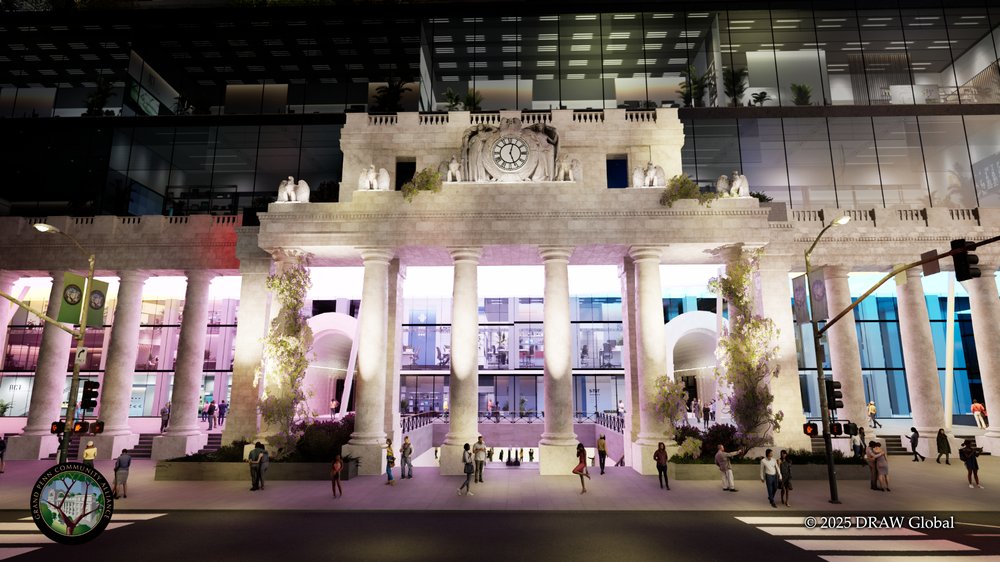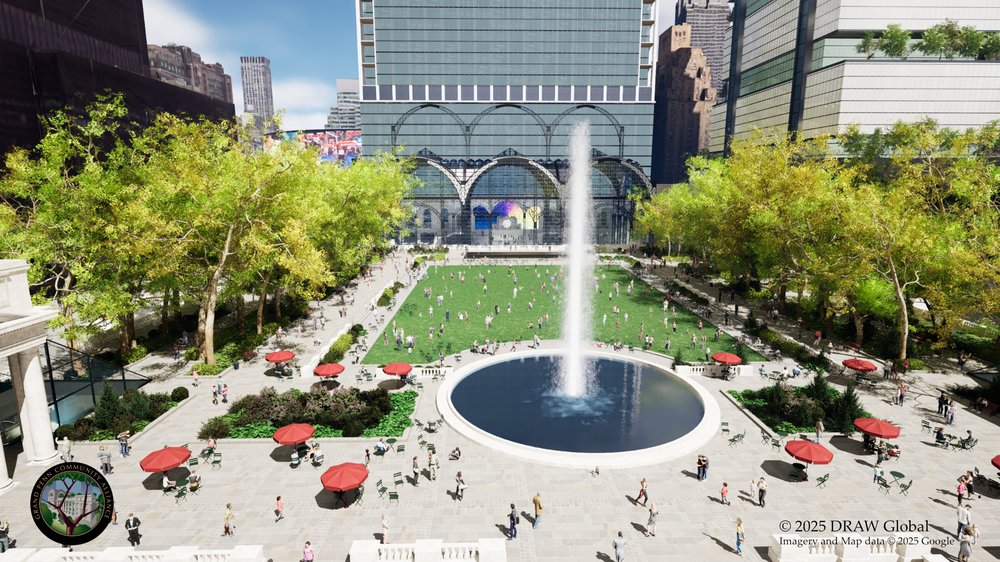GOP donor pushes 'traditional' redesign for Penn Station that aligns with Trump's taste
March 11, 2025, 4:44 p.m.
A new proposal to overhaul Penn Station would move Madison Square Garden across Seventh Avenue and add new entrances to the train hub fit with "classical" columns.

A group backed by a wealthy Republican donor has unveiled a new vision for Penn Station that aligns with President Donald Trump’s demand for classical architecture to be the standard for federal buildings.
The Grand Penn Community Alliance, a nonprofit design team, said Tuesday it wants to move Madison Square Garden across Seventh Avenue onto the former site of the Hotel Pennsylvania, which was demolished in 2023. The proposal would replace the arena that has sat atop Penn Station since 1968 with a new public plaza. The designs would also add new entrances to the train hub featuring Greco-Roman columns.
The group pushing the design is funded by the National Civic Art Society, which is backed by New York-based hedge fund manager Thomas Klingenstein. He donated more than $10 million to Republicans during the 2024 election cycle.
Kligenstein’s website includes an essay titled “Make America Beautiful Again” by National Civic Art Society President Justin Shubow. It argues “classical architecture is not just about unparalleled aesthetic excellence; it is the architecture of American democracy.” The essay celebrates an executive order issued by Trump in 2020 that promoted “classical and other traditional architecture” for federal buildings over modern, brutalist designs.
Trump renewed his design directive the day he returned to office this January, issuing another order directing federal agencies to ensure civic buildings “respect regional, traditional, and classical architectural heritage.”
While Penn Station is primarily used by NJ Transit and the Long Island Rail Road, it’s owned by Amtrak, which is federally run.
“The stars are finally aligning for Pennsylvania Station to transform into a beautiful, classical and easy-to-access train station that is built to accommodate the more than 600,000 passengers who use the station on a daily basis and New Yorkers who deserve robust public space,” said Alexandro Washburn, the chief architect behind the new proposal.
Washburn estimated his vision would cost $7.5 billion to construct. He previously contributed to the design of Moynihan Train Hall, which converted the classically designed Farley Post Office on Eighth Avenue into a new waiting area for LIRR and Amtrak trains.

The proposal is the latest in a medley of competing pitches for Penn Station in recent years. Gov. Kathy Hochul in 2021 proposed an overhaul that would bring higher ceilings and light-filled entrances to the station. She aimed for a portion of the work to be paid for with revenues from the construction of new skyscrapers in the area built by developers enticed with hefty tax breaks.
That plan was scuttled in 2022 when Steven Roth, the CEO of the company Vornado, which owns much of the land around Penn Station, told investors the commercial rental market wasn’t hot enough to support the new buildings.
Hochul has since pushed a similar redesign for Penn Station that depends on federal approval and federal funding.
MTA Chair Janno Lieber told reporters on Tuesday that the agency is focusing on “practical changes that can make it better for the riders … without waiting for 10 to 15 to 20 years. ”
Days after the November election, the governor appealed to Trump to help pay for the overhaul.
“I said from day one I want Penn Station to be something we can be proud of,” she told reporters at the time, discussing her conversation with Trump. “I said it can be beautiful. He agreed, he agreed that these are important priorities and pledged to work with me on those.”
The company ASTM, backed by former MTA Chair Pat Foye, has also backed another design for Penn Station that would add new glass entrances to the train hub.
Both Hochul and Foye’s visions would leave Madison Square Garden in place. The City Council in 2023 approved a five-year extension for the venue’s right to operate above Penn Station, putting its future in question.
None of the proposals incorporate Amtrak’s plan to expand Penn Station a block south of 31st Street, which officials say is necessary to handle additional train traffic made possible through the Gateway Program that’s now constructing new tunnels beneath the Hudson River. The southern expansion is controversial among Midtown residents because it would require the demolition of a city block.
Stephen Nessen contributed reporting to this story.
Penn Station developer backs off $22 billion project after years working behind the scenes with NY governor New report paves the way for expansion of Penn Station to increase train service